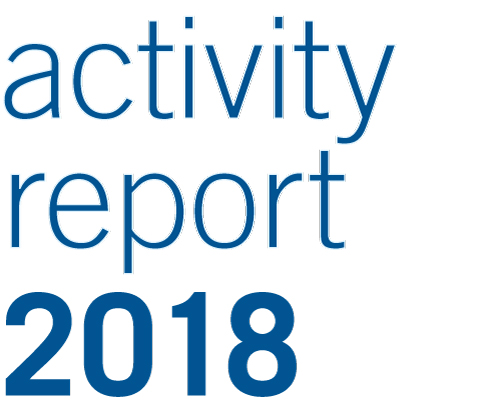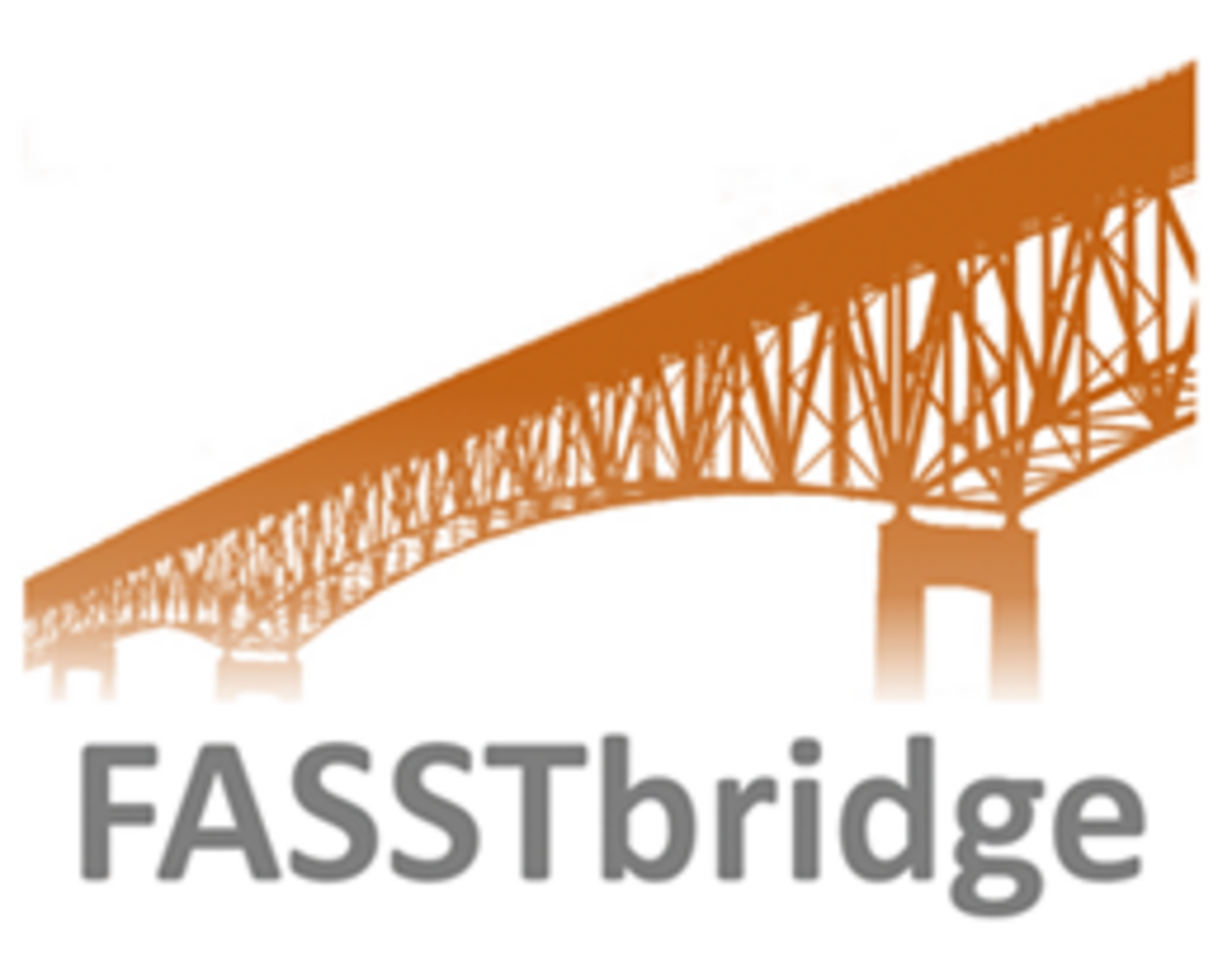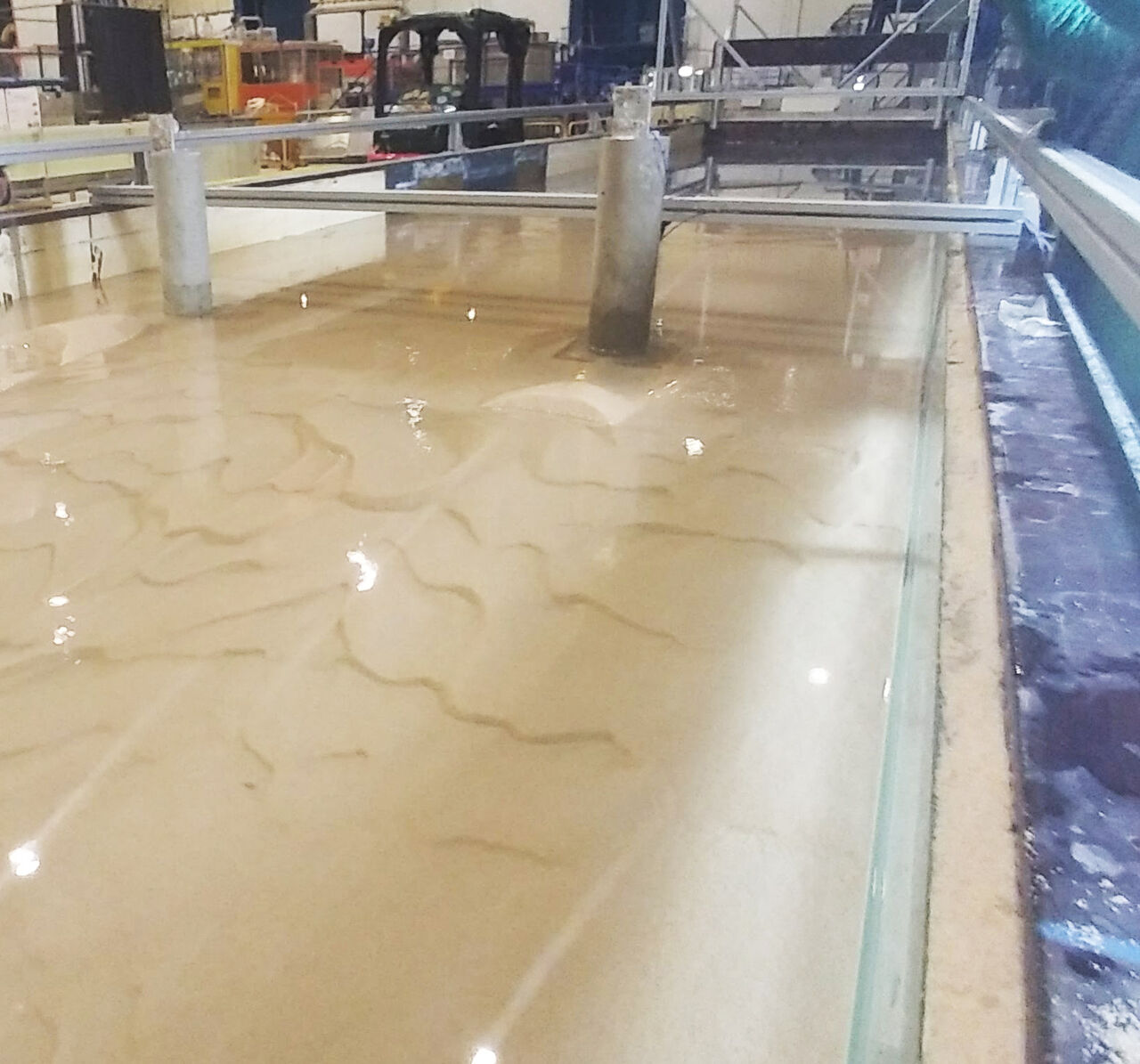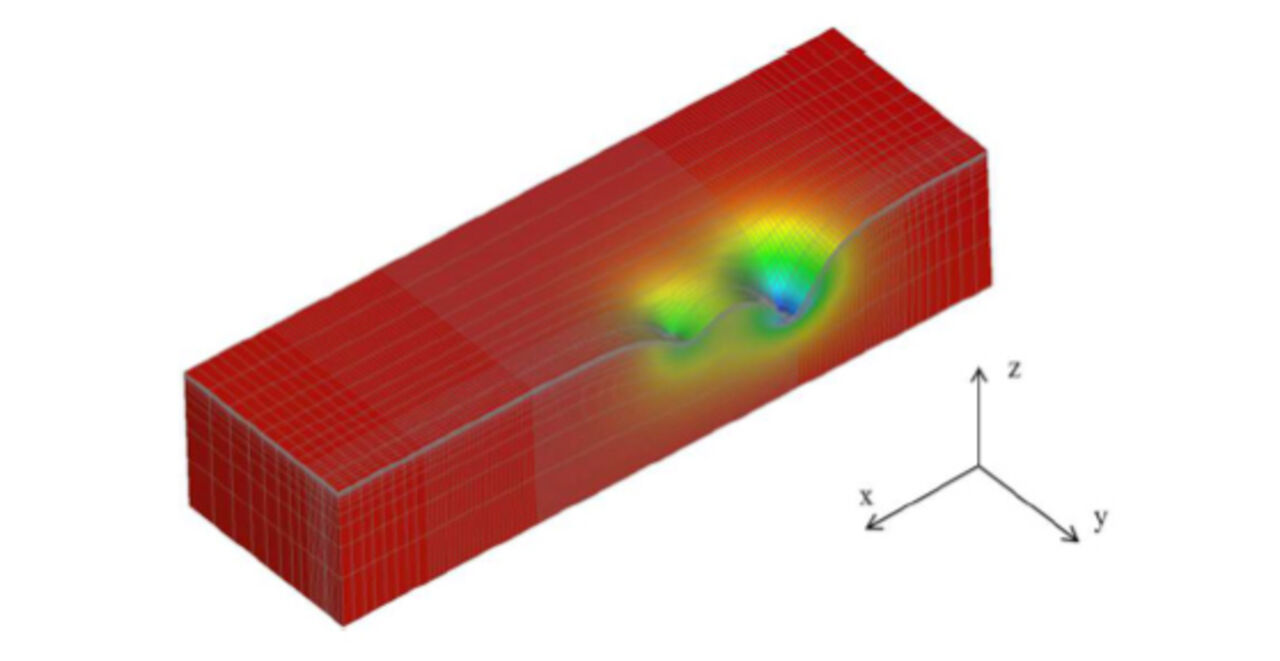Modifying infrastructure
Four achievements illustrate the initiatives undertaken at IFSTTAR to modify infrastructure in order to meet current and future demands, as well as to enhance its sustainability and resilience. A European project (FASSTbridge) proposed assessment approaches and composite-based strengthening techniques for metal structures. An interdepartmental research project backed up by a doctoral thesis focused on the detection of scour at bridge piers, in collaboration with a laboratory specialised in hydraulics affiliated with CEREMA. The ECODEM research project proposed non-destructive evaluation and testing methods using electromagnetic technologies for pavement layers and concrete masonry structures. The DEDIR project has resulted in the development of a low-cost technique for checking the condition of pavements by measuring their deflection basin. The vehicle-mounted systems in question use infrastructure management support software. The closing days of the DEDIR project were in May 2018 and were attended by researchers and the representatives of project owners and industry. The ALIZE-LCPC software has been updated and reprogrammed.
FASSTbridge – Fast and effective strengthening to extend the life-time of steel bridges
The FASSTbridge project (Fast and effective strengthening solution for steel bridges life-time extension) aimed to provide a complete solution using bonded composites for increasing the service life of metal structures (particularly with regard to fatigue). This solution includes a methodology for assessing the existing structure, sizing the strengthening and its application on an instrumented site as well as strengthening with a bonded composite strengthening system developed specifically for the project. The entire solution was applied to a real structure owned by the Madrid community of municipalities: the Jarama Bridge. This made it possible to verify the effectiveness of the proposed solution and to assess its merits with a cost-benefit and environmental analysis. The project was coordinated by TECNALIA with the following partners: the Community of Municipalities of Madrid, Dragados (Spain); LAP, MPA Stuttgart (Germany); Collanti (Italy); Altavista (United States), and IFSTTAR (France). IFSTTAR's SMC, EMGCU and Navier laboratories took part. A closing seminar was held during the CICE International Conference which took place in Paris from 17 to 19 July 2018. Two films were produced (one on the concept and the second on the on-site installation process) and 2 articles were published in international journals as well as 14 papers in international conferences with published proceedings.
Vulnerability of engineering structures to scour
Collaborative work with Saint-Venant hydraulics laboratory (EDF R&D, École des Ponts Paris-Tech and CEREMA)
Scouring is the removal and transport of sediment from the bed of a river due to the erosive action of flowing water. This phenomenon is accentuated by the presence of obstacles to flow, such as bridge piers and abutments, and also, in a marine context, quays, wind turbines and offshore oil pipelines. Scour pits reduce the load-bearing capacity of a structure and jeopardize its stability. In the context of this hydraulic risk, it is crucial to continuously monitor changes in the depth of scour in the vicinity of engineering structures and to assess their impact on the performance of the structure.
This research is based on the use of vibration analysis to monitor scouring and makes a contribution to the understanding of the soil-structure interaction phenomena involved. The selected scientific method incorporates two distinct approaches to scour monitoring: indirect and direct. The indirect method used a scour depth sensor (SDS) that is currently being developed. Experimental and numerical studies were carried out to evaluate the influence of scour on the dynamic response of the sensor (frequencies, modal deformation and damping) and on its static response under lateral loading. Based on our findings, a theoretical model of an equivalent beam was proposed to link the variation in sensor frequency to the scour depth. The direct approach focuses on the effect of scour on the dynamic response of the structure itself. Test campaigns were carried out on scale models in hydraulic channels. Particular attention was paid to the effects of the geometry of the pile and the interaction between the pile and the bridge deck. An analytical model has been proposed to predict how the frequency of piers will change as a consequence of scour. In order to validate this model, its results were compared with those of the experimental tests.
This work was the subject of a PhD thesis (Boujia N., 2018) and collaboration between several IFSTTAR departments (Mast, Gers, Cosys).
ECODEM - Non-destructive assessment and monitoring of dispersive media in civil engineering by electromagnetic wave propagation
The ECODEM research project (Non-destructive assessment and monitoring of dispersive media in civil engineering using electromagnetic techniques), which was scheduled to run for 4 years (2014-2017), ended with a national presentation day, open to staff of the French national technical network, academics, local authorities and major contractors, on January 29, 2019. The main partnership between IFSTTAR (GeoEND, S2I and the LAMES laboratories in Nantes) and the CEREMA research team (ENDSUM) has led to research work that has been described in numerous scientific publications (28 in high impact factor journals), thesis defences (6), accreditations to supervise research (2) and designs for measurement equipment and antenna-equipped robots (5).
A scientific report containing the main findings is due to be released shortly. These include the development of non-destructive assessment methodologies for the physical and geometric characterisation of infrastructure using frequency hopping radar techniques combined with the waveform inversion of radar signals, as well as the electromagnetic characterisation of materials (hydraulic and bituminous mixtures) in relation to durability indicators and condition parameters, which is useful for structure managers. Full-scale experiments on platforms and test sites have validated the methodologies in real and controlled situations.
PhD thesis by Vincianne Le Boursicaud: Measurement of the deflection basin to characterise pavement condition, funded as part of the DEDIR research project
Vinciane Le Bousicaud's thesis, defended on November 8, 2018, focuses on optimising the interpretation of deflection measurements in order to evaluate the structural characteristics of a pavement. Until now, only the maximum deflection and the radius of curvature have been analysed. First, the research developed a method to correct measurement biases resulting from the operation of the measurement devices. It then developed a methodology for calculating orthogonal indicators that are particularly sensitive to certain structural characteristics and that uses the entire measured signal. The resulting indicators are more sensitive than those used conventionally. They thus permit not only the detection of defects - like conventional indicators - but also their location on the x-axis and their characterisation in terms of their depth and nature. The entire body of work was validated not only by digital studies, but also by experiments on test sites. Finally, the application of the methods was successfully tested on measurements obtained over a 20 kilometre route.





